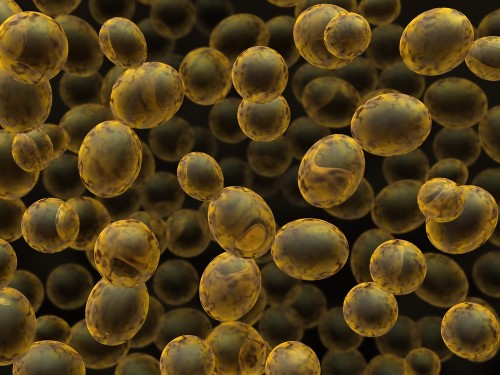An artificial version of the tiny creature that makes bread

In March 2014, undergraduate students who participated in the "Build Your Genome" course at Johns Hopkins University announced that they had managed to build a yeast chromosome from scratch - and make history. This is the first time that someone has synthesized a chromosome of a complex organism, a milestone in the field of synthetic biology. This is also an impressive achievement for the approach known as "DIY biology".
The target was chromosome 3, which is responsible for sexual reproduction of yeast and contains 316,617 pairs of DNA bases: A - adenine, G - guanine, C - cytosine, T - thymine. But the students took a shortcut and built only sections that are considered essential or without repetitions. The resulting chromosome therefore contained only 272,871 base pairs. In an article in the journal Science, the team members reported that the yeast with the new genes did not fall in size and growth rate compared to normal yeast.
"They are healthy and intact," says New York University biologist Jeff Boak, who helped lead the research as part of the Synthetic Yeast 2.0 project, an initiative to assemble a synthetic yeast genome that will allow scientists to control it almost completely. Boak and others intend to grow several thousand generations from this initial crop in the coming years, and examine their evolution over time. This will allow scientists to study various issues in biology, starting with the role of "junk" DNA and ending with the question of what is the absolute minimum of genetic code necessary for survival. "There is no end to the questions," says Boak.
The work so far includes only 3% of a complete synthetic yeast genome (containing 16 chromosomes), a task that will only be completed in many years. If it is completed, the synthetic yeast will perhaps occupy the second place on the list of organisms whose entire genome is artificial; In 2010, a bacterium's genome was assembled at the J. Craig Venter Institute.
It could also lead to a groundbreaking change in the multigenerational coexistence of humans with Saccharomyces cerevisiae, the yeast that makes bread and wine. Yeast today produces human proteins for medical needs, biofuels, and other unique products. The ability to precisely tune the genetic makeup of this microscopic fungus will, according to Boak, make it possible to produce better beer or more environmentally friendly chemicals. And after the yeast? "The Drosophila fly? worm? We still don't know what's next."
More of the topic in Hayadan:
The article was published with the permission of Scientific American Israel

6 תגובות
I got you. Just don't forget that the job of a title is to make you read the article... This is not the title of an article in a scientific magazine, not that I am disrespecting this site...
Miracles. I did not say that this work is not important. I resented the title, which does not fit the content.
Dr. Dror Bar-Nir
I don't think like you. This work, following the work of Craig Venter, has, in my opinion, enormous significance. We are approaching, very slowly to my delight, a situation where we can build creatures as we wish. I think that means a lot. We can produce more effective vaccines, cure cancer and even repair damaged organs.
I know there are two great dangers in this. The first is the creation of a creature that will simply kill us all - if, let's say, we create a bacterium that will succeed in evolving into a violent bacterium that we cannot stop. I think it's a worthwhile risk - even nature can create such a creature, and it's better that we at least understand the mechanisms to defend ourselves against such an event.
The second risk is the creation of a weapon by a terrorist organization - in this case, it is better for reputable laboratories to investigate the issue and not the laboratories of ISIS....
In any case, this is not about creating a still life, which is a completely different topic.
The title is exaggerated. Its witnesses are far from "do it yourself". In total, they synthesized one chromosome and shortened it and replaced the original chromosome.
Even if they synthesize all 16 and replace them - it's still not "do it yourself". You still need a functioning original cell to take up the DNA.
In another 10 years, terrorists will buy used paving machines, download the code for Ebola anthrax or anything crazy and synthesize at home
Mix flu or cold with anthrax and grow inside eggs from the grocery store
fun to read